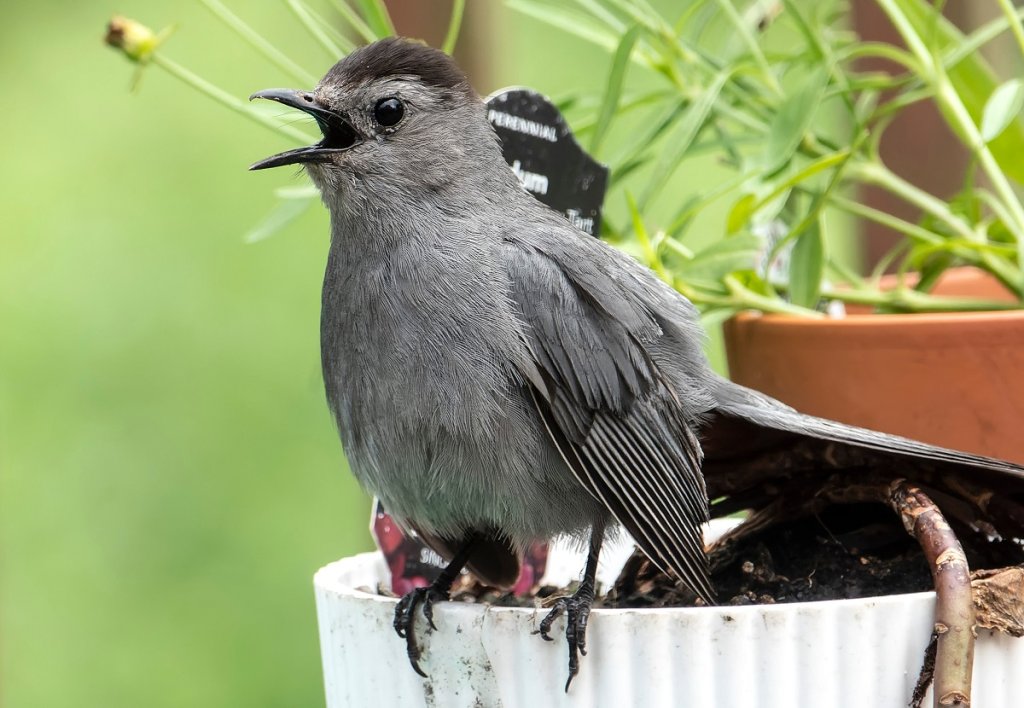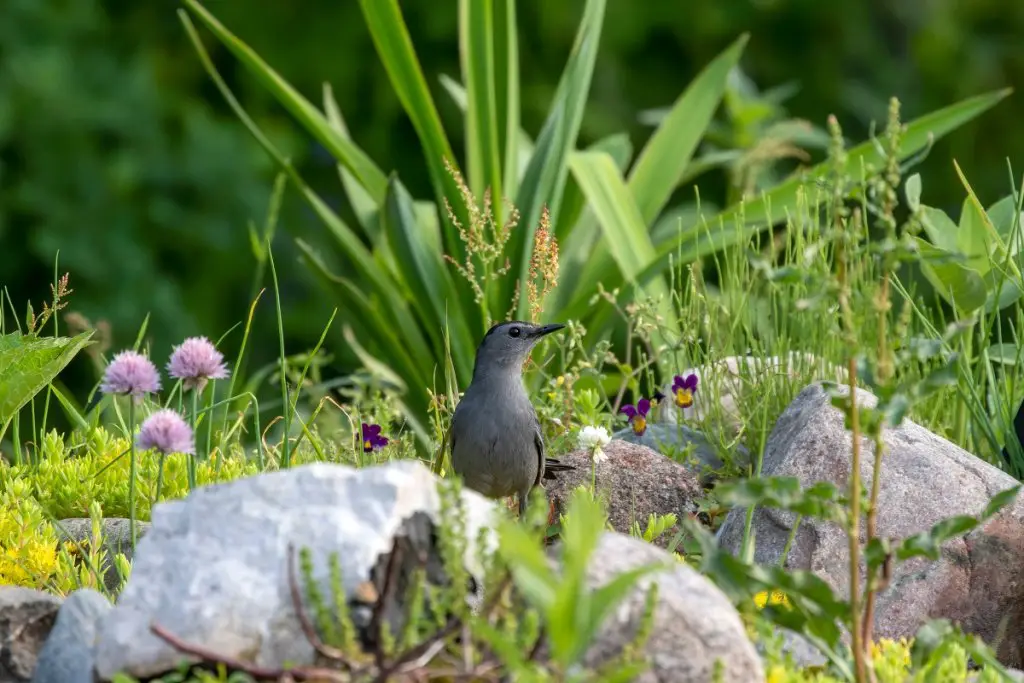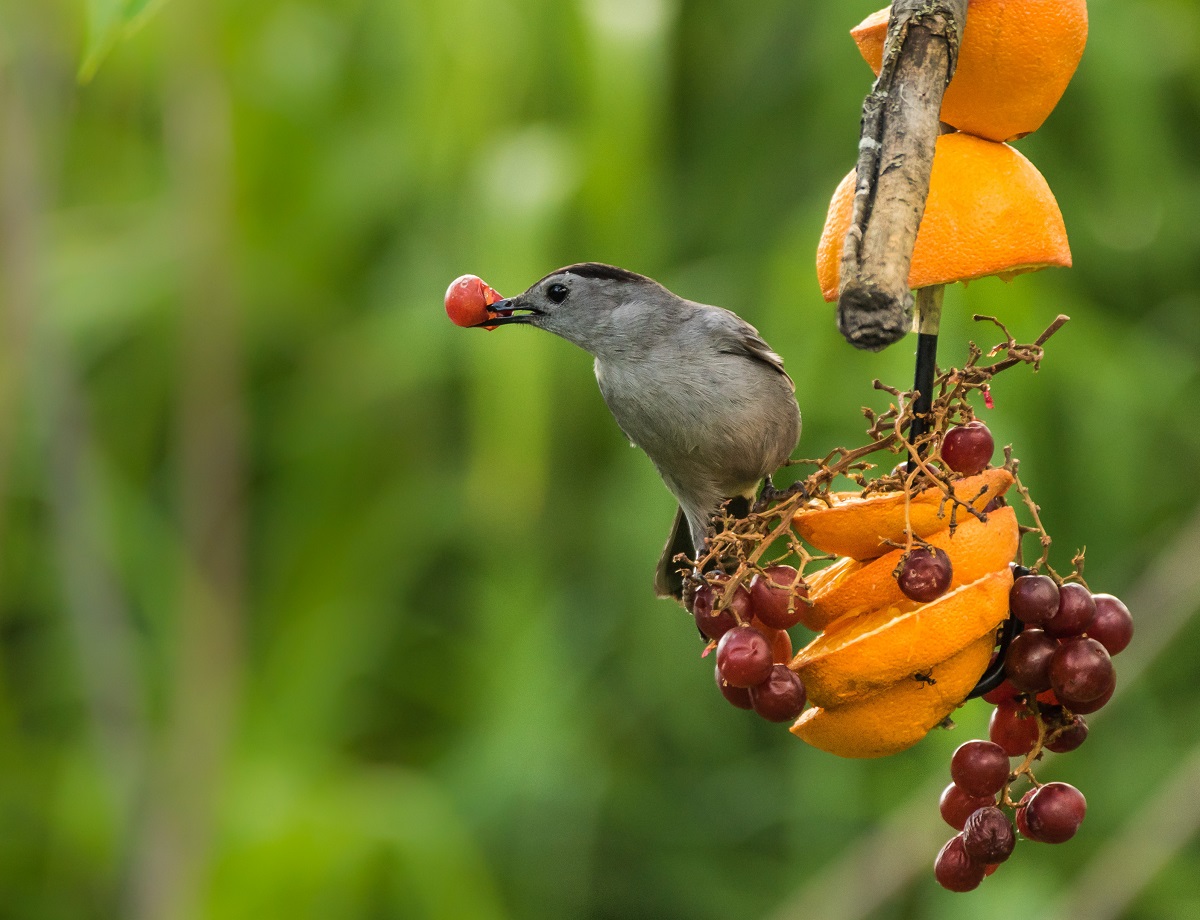The Gray Catbird (Dumetella carolinensis) is a common bird found throughout North American. The Catbird is named for its ability to make catlike sounds, but this medium-sized songbird can also mimic other birds or sounds. Gray Catbirds have mostly gray feathers, with black caps and tails tinged with red.
Catbirds are named for their ability to utter a catlike “meow” when sounding the alarm to alert other birds of danger. They incorporate the sound with many other whistles, notes, squeaks, and bits of songs from other birds.
How Many Species Of Catbirds Are There?
Catbirds belong to the Mimidae family, which includes mockingbirds, thrashers, trembles, and catbirds. These bird species are known for their ability to mimic the songs of other birds. These songbirds can also mimic the sounds of urban environments and other animals.
There are 35 bird species included in this family, all native to the Americas. Most of them are mockingbirds or thrashers.
The Gray catbird is a member of the New World Catbirds in the Passeriformes order. There are two varieties of New World Catbirds:
- Gray catbird (Dumetella carolinensis)—found in North America
- Black catbird (Melanoptila glabrirostris)—located on the coasts of Yucatan
The New World Catbirds are likely closely related to Thrashers. The gray catbird can also be referred to as the grey catbird with the alternative spelling of “gray.” The name “catbird” can be written as one word or two.

Why Are Catbirds Called Catbirds?
The gray catbird sounds like a cat mewing. The sound is not an exact match to a cat, but Audobon.org describes it as like a “dry stick being snapped abruptly into pieces.” Others have compared it to the cry of a Celtic banshee found in Irish folklore as recreated in movies. This mew call is the reason for the common name catbird.
The gray catbird frequents thickets and tangles of vines. If you hear catlike sounds from dense shrubs or other vegetation, there’s a good chance it is a catbird. Catbirds sing at all hours of the day, rather than mainly at dawn and dusk, like other songbirds.
The catbird does not confine itself to meowing. Rather, these songbirds string together a variety of sounds and can sing for up to 10 minutes.
The Gray Catbird sounds distinct because Catbirds string random notes together, creating unique songs with no patterns. Other family members, like Thrushes or Northern Mockingbirds, tend to repeat one message or phrase over and over again. Males are the principal singers, but females and males may sing quietly to each other during mating.
What Does The Gray Catbird Look Like?
Gray Catbirds are medium-sized birds with gray feathers. They have a black cap on their head and cinnamon-colored underparts. The feathers between their belly and tail, called undertail coverts, are rust-colored. Gray Catbirds also have long, black tails. They are 8.5 inches long with a wingspan of 11 inches.
Catbirds often perch with their tails pushed downward, making them look hunchbacked. Females look similar to males and have smaller bills, long legs, and rounded wings. Juveniles are mainly gray with little other coloring.
While the catbird is not a stunning beauty, it is full of personality, friendly, and curious. As it sings, it makes many twists and turns and assumes various positions to accompany its vocalizations.

What Is The Main Diet Of The Gray Catbird?
Catbirds eat a variety of seeds, nuts, berries, and insects. They use their bills to forage on the ground for food, turn over leaves to uncover insects, and eat the bugs underneath. Catbirds especially enjoy caterpillars, ants, beetles, grasshoppers, spiders, and millipedes, plus fruit. Nestlings are fed mostly insects.
Especially during winter, the gray catbird expands its diet to include a variety of berries and fruits. During the summer, the bird enjoys a buffet of berries that are in season.
At feeders, the gray catbird consumes a variety of offerings. Birders have documented catbirds eating doughnuts, cornflakes, boiled potatoes, peanut butter, and even cheese. Like many birds, they enjoy oranges and grape jelly, along with softened raisins.

What Is The Gray Catbird’s Habitat?
The gray catbird prefers to live in vine tangles, thickets, and deciduous forests, although they stay away from forests during the breeding seasons. The genus of the Catbird, Dumetella, means “small thicket”—the perfect place to look for the gray catbird. Catbirds often inhabit small trees on forest edges, abandoned farmland, or residential areas. These songbirds tend to avoid coniferous forests.
The gray catbird is a migratory bird. They breed in the eastern 2/3 of the United States and southern Canada and migrate to Mexico, the Caribbean, or the southern United States in the winter. Gray catbirds live year-round along the Atlantic Coast.
During breeding season, females usually build nests on horizontal branches in the center of dense shrubs. They lay between 1 and 6 turquoise eggs in each clutch and can have 2-3 broods in a season. Gray catbird nests are vulnerable to nest invasion by the brown-headed cowbird. Cowbirds lay their eggs in catbird nests in hopes that catbirds will raise cowbirds rather than their own young. Mother catbirds routinely pierce the foreign eggs and evict them from the nest.

